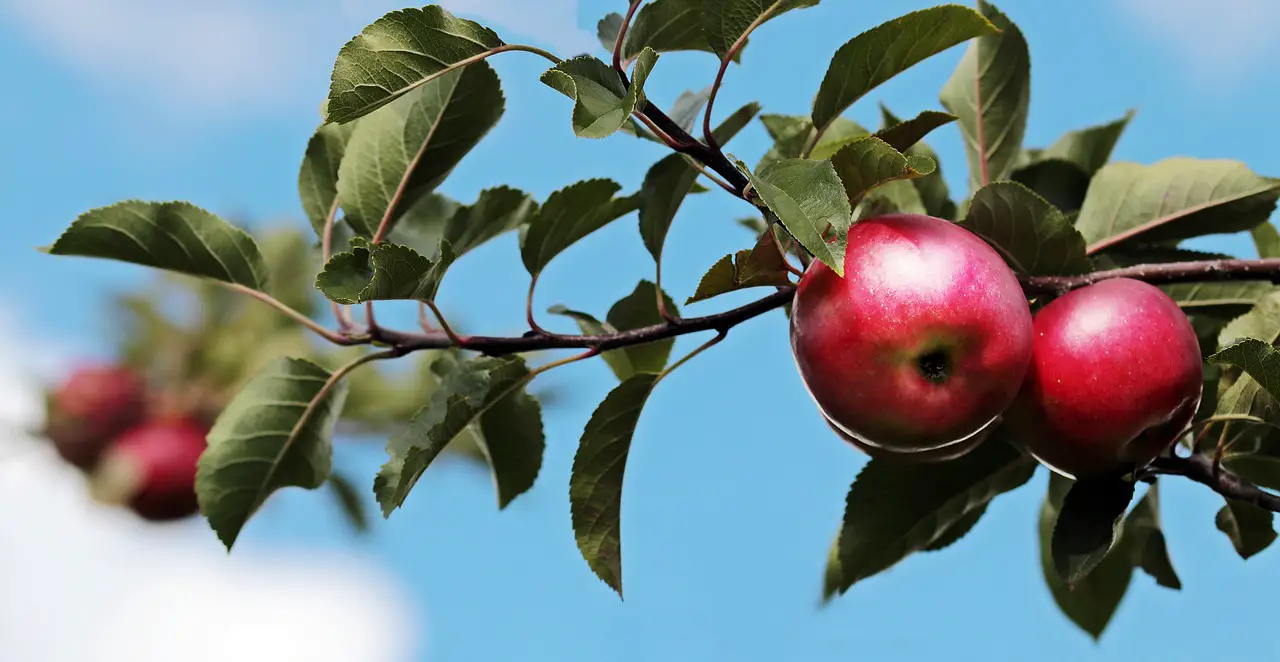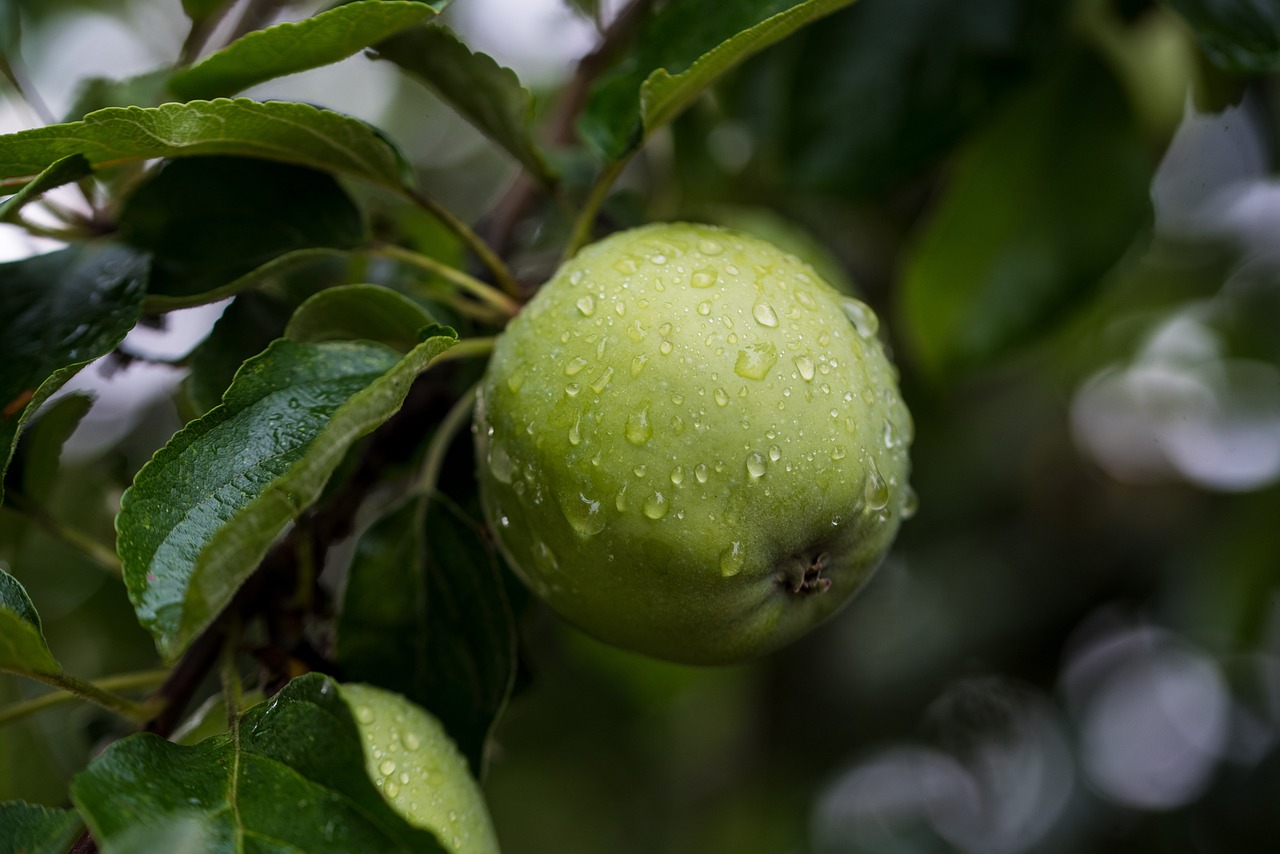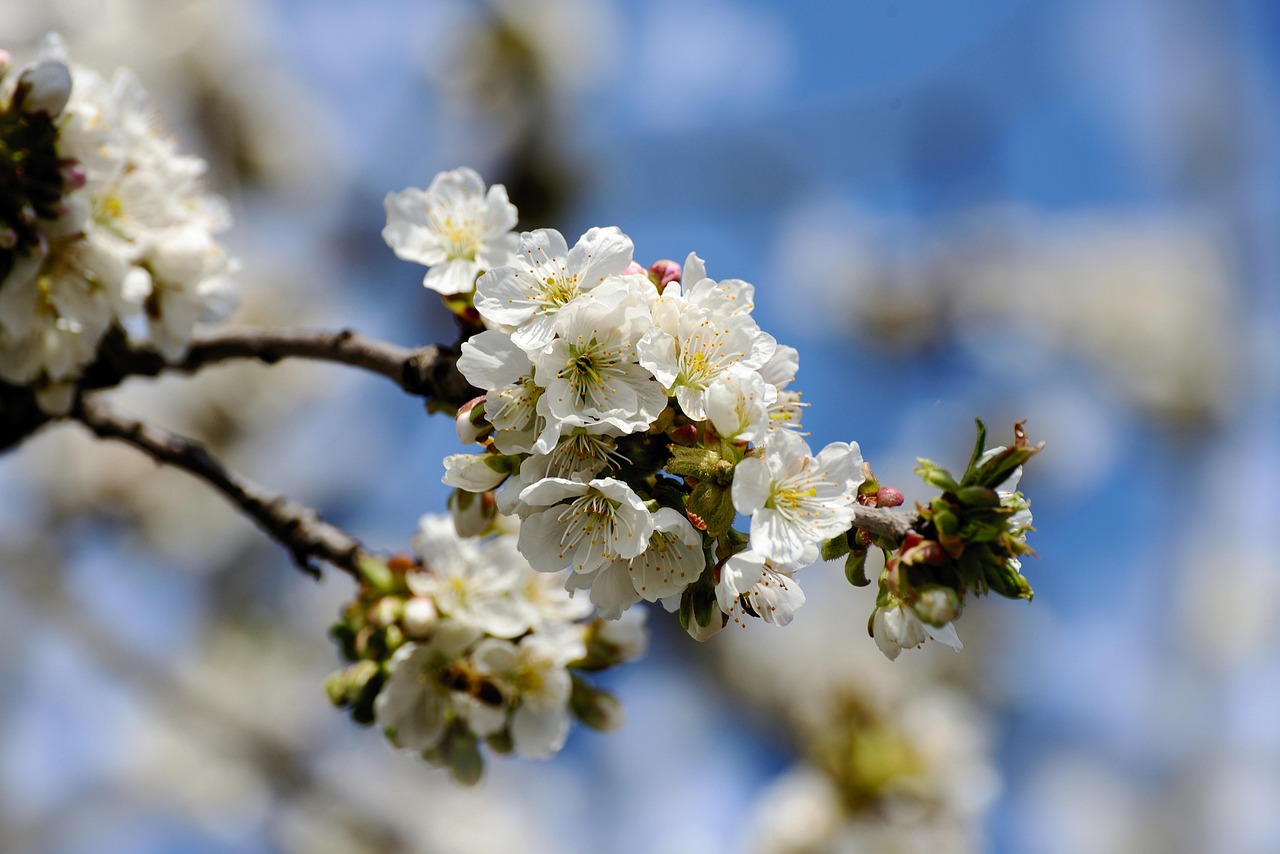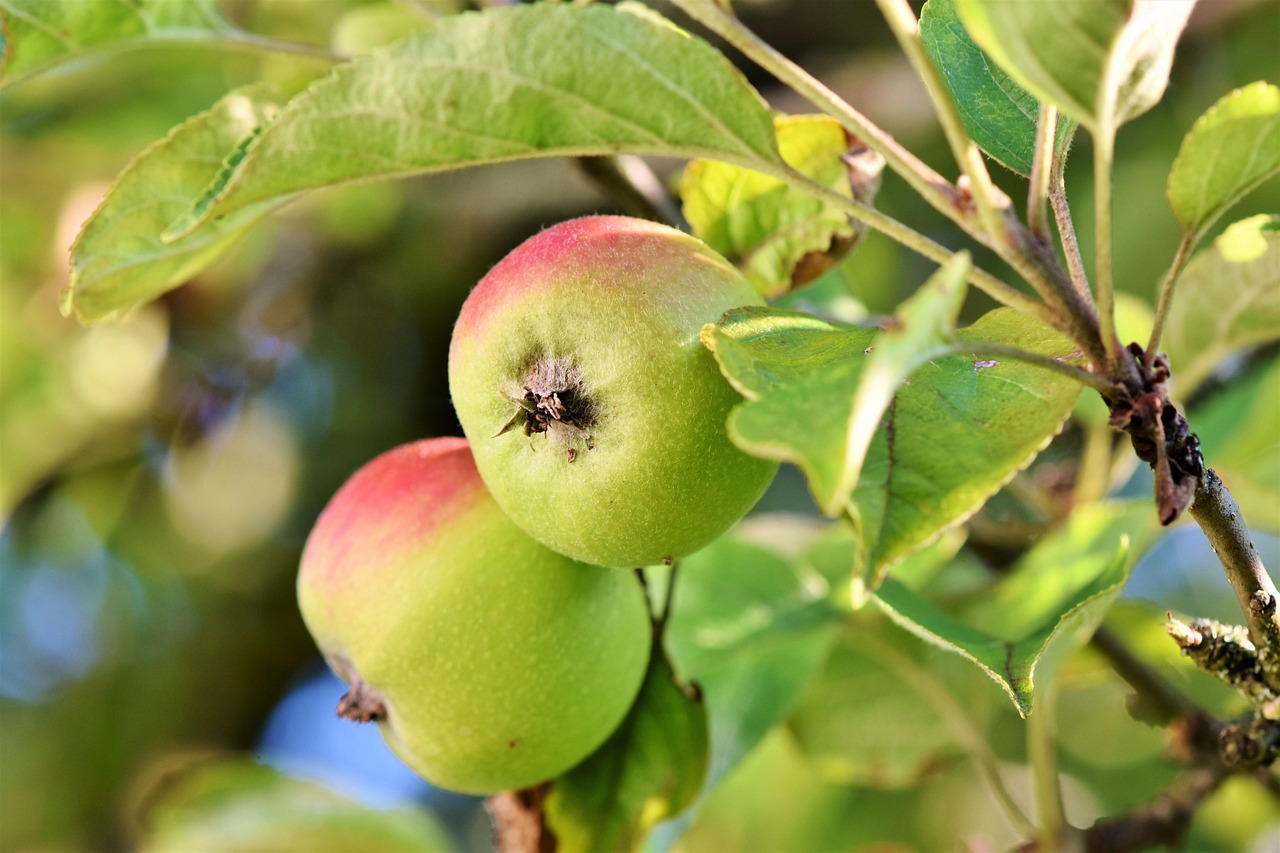Understanding apple tree growth rates helps gardeners plan effectively. Typically, apple trees grow 12 to 24 inches annually and reach maturity in 4 to 6 years based on variety and care. Proper site selection, soil management, watering, and seasonal care are essential to optimize growth and ensure a fruitful harvest.
Understanding Apple Tree Growth
Apple trees are popular choices for home gardens due to their delicious fruit and beautiful blossoms. When planting apple trees, it is crucial for gardeners to understand their growth rates. Knowing how fast these trees grow can help in planning the space, care, and maintenance of a fruit garden.

Several factors influence the growth rate of apple trees. These include the type of apple tree, soil quality, water availability, and climate conditions. Different varieties have unique growth habits and time frames for fruit production. For instance, dwarf apple trees tend to grow slower than standard-sized trees but may start producing fruit sooner.
Factors Affecting Growth Rate
Several elements play a vital role in determining how quickly an apple tree grows. Here are some of the most significant factors:
- Variety: Different apple varieties have varying growth rates. Dwarf trees typically grow slower but produce fruit earlier.
- Soil Quality: Well-draining soil with the right nutrients supports healthy growth. Poor soil can hinder development.
- Watering: Adequate watering is essential. Both overwatering and underwatering can negatively impact growth.
- Climate: Apple trees thrive in temperate climates. Extreme weather can stunt growth or damage the tree.
- Sunlight: Full sunlight is necessary for optimal growth. Insufficient light can lead to slower growth rates.
Growth Rate Statistics
The following table provides an overview of average growth rates for different types of apple trees:

| Apple Tree Type | Average Growth Rate (inches/year) | Time to Maturity (years) |
|---|---|---|
| Dwarf Apple Trees | 8 – 12 | 3 – 4 |
| Semi-Dwarf Apple Trees | 12 – 18 | 4 – 5 |
| Standard Apple Trees | 18 – 24 | 5 – 6 |
These statistics give gardeners a clear idea of what to expect when planting apple trees. Dwarf varieties are excellent choices for small spaces, while standard varieties are better suited for larger gardens.
Pro-Tips: Lessons From My Experience
- When I first planted my apple trees, I underestimated the importance of site selection. Now I always choose a spot with full sun and well-drained soil—skipping this step can delay growth and reduce fruit quality.
- I used to think watering was straightforward, but I learned that deep, infrequent watering encourages deeper roots. Overwatering makes roots shallow and prone to rot, so now I check the soil moisture before watering.
- Pruning is something I used to do only when I thought of it, but I discovered that winter pruning enhances tree structure and fruit production. Skipping pruning can lead to overcrowded branches and poor air circulation.
- Initially, I didn’t pay enough attention to pollination compatibility. I now always plant at least two compatible varieties that bloom simultaneously to ensure good fruit set.
- I overlooked pest and disease prevention early on. Now I regularly inspect my trees and apply organic treatments preventively, saving me from more serious issues later.
- When I first tried growing apple trees, I ignored soil testing. Now I test my soil annually and amend it based on results, which has noticeably improved tree health and fruit yield.
- Finally, I learned that patience is key. Rushing the growth process or expecting immediate results can be discouraging. Consistent care over the years truly pays off in a bountiful harvest.
Planting for Success
To ensure healthy growth, proper planting techniques are crucial. Gardeners should pay attention to the following guidelines:
- Selecting the Right Location: Choose a site with full sun exposure and well-drained soil.
- Spacing: Space trees adequately to allow for air circulation and access to sunlight.
- Soil Preparation: Amend the soil with organic matter to improve drainage and nutrient content.
- Watering Schedule: Establish a consistent watering routine, especially during dry periods.
A well-planned approach to planting can significantly enhance the growth rate and overall health of the apple trees. By considering these factors, gardeners can create an environment that promotes vigorous growth and fruitful harvests.

Caring for Your Apple Trees
Caring for apple trees involves regular maintenance practices that support healthy growth. These practices include pruning, fertilizing, and pest management. Pruning helps shape the tree and encourages better air circulation. Fertilizing provides essential nutrients that can boost growth rates. Additionally, monitoring for pests ensures that the trees remain healthy and productive.
In conclusion, understanding the growth rates of apple trees is essential for any gardener looking to cultivate a fruitful garden. With the right knowledge and practices, it is possible to enjoy a bountiful harvest in just a few years.
Common Apple Tree Varieties
When selecting apple trees for your garden, it is vital to consider the variety. Each type of apple tree has unique characteristics, including growth rates, fruit flavor, and disease resistance. Understanding these differences can help gardeners choose the best options for their specific needs.

Popular Apple Varieties
Here are some of the most popular apple tree varieties, along with their growth characteristics:
- Honeycrisp: Known for its sweet flavor and crisp texture, Honeycrisp trees grow moderately fast. They typically reach maturity within 4 to 5 years.
- Granny Smith: This tart apple variety grows vigorously and is a favorite for cooking and baking. It usually matures in about 5 to 6 years.
- Fuji: Fuji apples are sweet and juicy. These trees have a moderate growth rate and can take 5 to 6 years to bear fruit.
- Gala: Gala apple trees grow relatively quickly, often producing fruit within 3 to 4 years. Their sweet flavor makes them popular among gardeners.
- McIntosh: With a soft texture and tart flavor, McIntosh trees grow at a moderate pace and typically mature in 4 to 5 years.
Understanding Pollination Requirements
Pollination is a critical aspect of apple tree growth and fruit production. Apple trees are not self-pollinating, meaning they require pollen from another variety to produce fruit. This factor is essential for gardeners to consider when planning an apple orchard.
Types of Pollination
There are two main types of pollination relevant to apple trees:
- Cross-Pollination: This occurs when pollen from one apple variety fertilizes the flowers of another variety. Cross-pollination often results in better fruit quality and higher yields.
- Self-Pollination: Some apple tree varieties can pollinate their flowers using their pollen. However, these trees may not produce as much fruit compared to those that benefit from cross-pollination.
Best Practices for Pollination
To ensure successful pollination, gardeners should follow these practices:
- Plant Compatible Varieties: Choose at least two different apple varieties that bloom around the same time to facilitate cross-pollination.
- Consider Bee Activity: Bees are crucial for pollination. Ensure that your garden attracts bees by planting flowers nearby or avoiding pesticides during blooming seasons.
- Space Trees Appropriately: Proper spacing between trees allows for better air circulation and makes it easier for pollinators to move between flowers.
Pest and Disease Management
Healthy apple trees are less susceptible to pests and diseases. However, gardeners must remain vigilant and proactive in managing potential threats. Common issues include pests like aphids and diseases like apple scab.
Common Pests
The following table highlights common pests that may affect apple trees along with management strategies:
| Pest | Description | Management Strategy |
|---|---|---|
| Aphids | Small insects that suck sap from leaves, causing curling and yellowing. | Use insecticidal soap or introduce natural predators like ladybugs. |
| Codling Moth | Lays eggs inside fruit, resulting in wormy apples. | Apply pheromone traps and remove infested fruits. |
| Spider Mites | Tiny red or green bugs that damage leaves, leading to discoloration. | Maintain humidity levels and use miticides if necessary. |
Common Diseases
In addition to pests, several diseases can affect apple trees. Here are some common diseases and their management strategies:
- Apple Scab: This fungal disease causes dark spots on leaves and fruit. To manage it, remove fallen leaves and apply fungicides during wet seasons.
- Powdery Mildew: A white fungal coating appears on leaves. Preventive measures include proper spacing and using resistant varieties.
- Cedar Apple Rust: This disease requires both cedar and apple trees to complete its lifecycle. Control it by pruning nearby cedar trees and applying fungicides.
By addressing pest and disease management proactively, gardeners can ensure healthier apple trees that thrive and produce quality fruit. Understanding the requirements of specific varieties, pollination practices, and maintenance strategies will lead to a successful fruit garden.
Soil and Nutrient Management for Apple Trees
The health of apple trees largely depends on the soil in which they are planted. Proper soil management ensures that trees receive essential nutrients, leading to vigorous growth and fruitful harvests. Understanding soil composition, pH levels, and nutrient requirements is crucial for any gardener.
Understanding Soil Composition
Soil is made up of different components, including sand, silt, clay, and organic matter. Each component plays a role in how well apple trees grow. Here’s a breakdown of the ideal soil composition for apple trees:
- Sand: Provides good drainage and aeration, preventing root rot.
- Silt: Retains moisture and nutrients, helping nourish the tree.
- Clay: Holds nutrients well but can become compacted, which affects drainage.
- Organic Matter: Improves soil structure and provides essential nutrients.
Optimal pH Levels
The pH level of the soil affects nutrient availability for apple trees. The ideal pH range for apple trees is between 6.0 and 7.0. Here’s how to manage soil pH:
- Testing Soil: Regularly test your soil using a pH testing kit available at garden centers. This will help you understand if your soil is too acidic or alkaline.
- Adjusting pH: If your soil is too acidic, you can add lime to raise the pH. Conversely, if it is too alkaline, sulfur or organic compost can help lower it.
Nutrient Requirements
Apple trees require several key nutrients to grow and produce fruit effectively. The primary nutrients include nitrogen (N), phosphorus (P), and potassium (K). Here’s a closer look:
| Nutrient | Function | Sources |
|---|---|---|
| Nitrogen (N) | Promotes leaf growth and overall vigor. | Compost, aged manure, and nitrogen-rich fertilizers. |
| Phosphorus (P) | Supports root development and flowering. | Bone meal, rock phosphate, and superphosphate fertilizers. |
| Potassium (K) | Enhances fruit quality and disease resistance. | Wood ash, greensand, and potassium sulfate. |
To ensure that your apple trees receive the right nutrients, it is advisable to conduct a soil test before planting. Based on the results, you can amend the soil accordingly to provide a balanced nutrient supply.
Irrigation Strategies for Apple Trees
Watering is another vital component of managing apple tree growth. Adequate moisture ensures that trees can absorb nutrients effectively and develop strong root systems. However, overwatering or underwatering can lead to various problems.
Watering Guidelines
Here are some essential tips for watering apple trees:
- Deep Watering: Water deeply and infrequently to encourage deep root growth. Aim for about 1 to 2 inches of water per week during the growing season.
- Mulching: Apply a layer of mulch around the base of the tree. This helps retain moisture, suppress weeds, and regulate soil temperature.
- Monitoring Soil Moisture: Check the soil moisture regularly by inserting your finger into the soil. If it feels dry 2 inches down, it’s time to water.
Irrigation Systems
Consider implementing an irrigation system for consistent watering. Here are a few options:
- Drip Irrigation: Delivers water directly to the roots and minimizes water waste.
- Soaker Hoses: Allow water to seep through the hose into the soil gradually, providing even moisture.
- Sprinkler Systems: Useful for larger orchards but ensure that they provide adequate coverage without causing waterlogging.
Seasonal Care for Apple Trees
Caring for apple trees involves seasonal tasks that promote healthy growth throughout the year. Each season presents unique challenges and opportunities for tree care.
Spring Care
In spring, focus on the following tasks:
- Pruning: Remove dead or diseased branches to improve air circulation and light penetration.
- Pest Monitoring: Begin checking for pests as temperatures rise and new growth emerges.
- Fertilizing: Apply a balanced fertilizer as new growth begins to support vigorous leaf development.
Summer Care
During summer, continue with these care practices:
- Irrigation: Ensure consistent watering during hot months to prevent stress on the trees.
- Pest Management: Keep an eye out for any pest infestations and take appropriate action promptly.
- Thinning Fruit: As fruit develops, thin out excess apples to improve size and quality.
Caring for apple trees throughout the seasons helps ensure healthy growth and abundant fruit production. By understanding soil management, irrigation techniques, and seasonal care practices, gardeners can cultivate thriving apple trees in their gardens.
Fall and Winter Care for Apple Trees
The care of apple trees does not end with the summer months. Fall and winter are crucial times for preparing trees for the next growing season. Proper attention during these seasons helps ensure the longevity and productivity of apple trees.
Fall Care
As autumn approaches, the focus shifts to preparing apple trees for winter. Here are important tasks to consider:
- Harvesting: Ensure apples are harvested at the right time for optimal flavor and storage. Check for firmness and taste before picking.
- Cleaning Up: Remove fallen leaves and fruit from the ground to reduce the risk of pests and diseases overwintering in your garden.
- Mulching: Apply a layer of mulch around the base of the tree. This helps insulate the roots and retain soil moisture.
- Winterizing Trees: For young trees, consider wrapping trunks with tree guards to protect against cold temperatures and animal damage.
Winter Care
In winter, apple trees enter dormancy, but they still require attention. Here’s how to care for them during this season:
- Pruning: Winter is an ideal time for pruning dormant apple trees. Remove dead or crossed branches to enhance air circulation and prepare for new growth in spring.
- Monitoring for Damage: Inspect trees regularly for signs of damage from ice or snow accumulation. Remove any broken branches promptly.
- Watering During Dry Spells: If winter conditions are dry, be sure to water the trees, especially if they are young and newly planted.
Apple Tree Growth Rate Chart Summary
Throughout this article, we have explored various factors that influence the growth rates of apple trees. Understanding these dynamics can help gardeners make informed decisions. Below is a brief summary of key points related to growth rates:
| Apple Tree Type | Growth Rate (inches/year) | Time to Maturity (years) |
|---|---|---|
| Dwarf Apple Trees | 8 – 12 | 3 – 4 |
| Semi-Dwarf Apple Trees | 12 – 18 | 4 – 5 |
| Standard Apple Trees | 18 – 24 | 5 – 6 |
Final Thoughts
Cultivating apple trees can be a rewarding experience for gardeners of all skill levels. By understanding the growth rates, selecting appropriate varieties, and implementing effective care strategies throughout the seasons, you can establish a fruitful apple orchard that thrives year after year.
From ensuring optimal soil conditions to managing pests and diseases, every detail contributes to the health and productivity of your apple trees. Whether you are a novice gardener or an experienced fruit grower, the knowledge gained from this article empowers you to make informed choices in your gardening journey.
As you embark on or continue your apple-growing adventure, remember that patience and consistent care are vital. With time, dedication, and the right practices, you will enjoy a bountiful harvest of delicious apples that you can share with family and friends.
Happy gardening!
